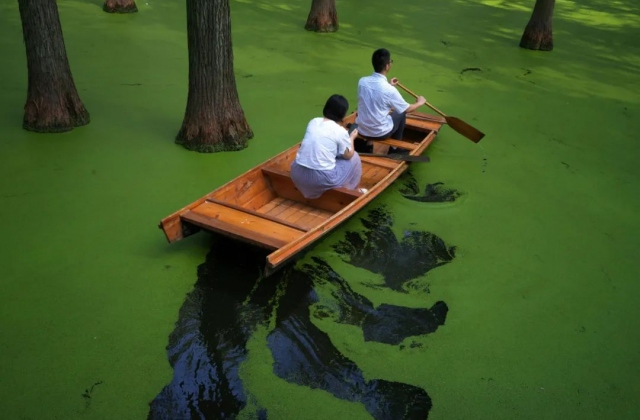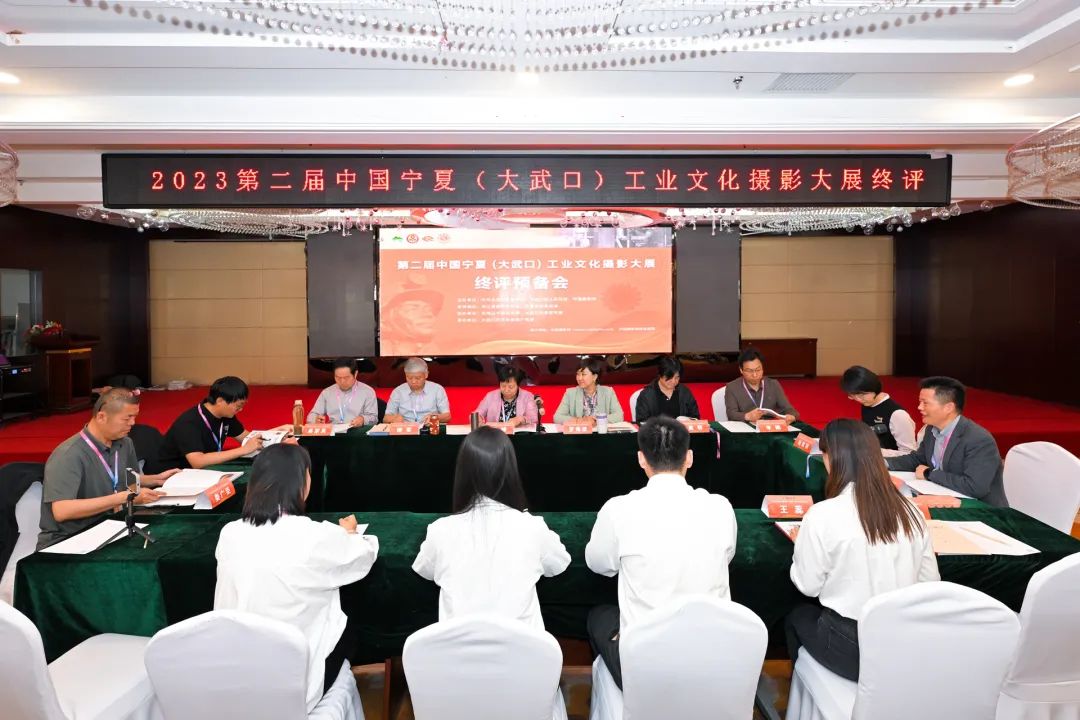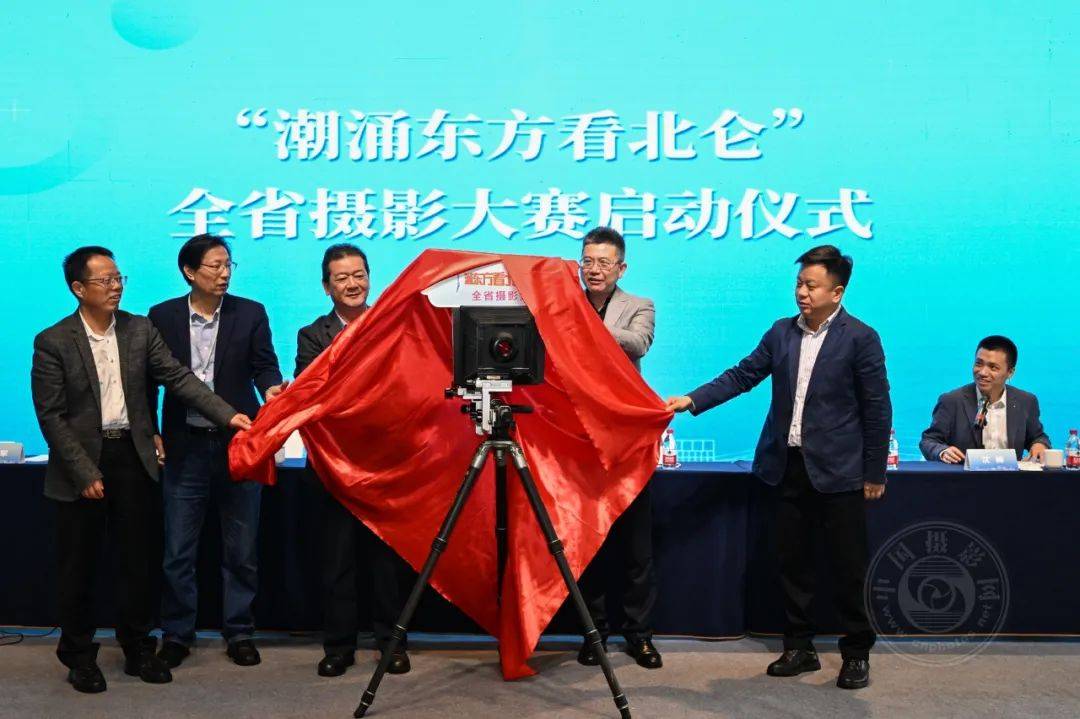
澄怀观道
—— 冯建国摄影艺术收藏展
Observing the Way with a Clear Heart
Feng Jianguo's Photographic Art Collection Exhibition
2023.09.01 - 2023.10.17
开幕时间 | Opening:2023.09.01 16:00
地点 | Venue : 金杜艺术中心 KWM artcenter
(北京市朝阳区东三环中路1号环球金融中心东塔2层201)
(2nd Floor, East Tower, World Financial Center, 1 Dongsanhuan Zhonglu, Chaoyang District, Beijing)
营业时间 | Opening Time : 周二-六 Tue-Sat 10:00-19:00
2023年09月01日下午16:00,
“澄怀观道-冯建国摄影艺术收藏展”在北京金杜艺术中心隆重开幕。
The "Observing the Way with a Clear Heart: Feng Jianguo's Photographic Art Collection Exhibition”. opened grandly at the KWM artcenter on September 1, 2023 at 4 p.m.
本展览作为金杜艺术中心首个大画幅摄影作品展,由来自清华大学当代艺术研究所所长张敢教授策展。展览以冯建国二十多年的摄影历程为核心,展示艺术家两个系列的作品:《黄山意象》与《佛缘定力》。《黄山意象》系列作品源于冯建国几十次登临黄山之巅,深切体会到黄山如同大自然的一部天书——它不仅有秀美的景观,又有深厚的文化底蕴,它的自然景象在四季中常常变化莫测,千姿百态,它既有山的崇高、宁静,又有水的变幻、灵动,是中国山水景观的一种非常典型而又丰富多元的体现。艺术家认为:“在中华传统观念中,走向自然、亲近山水,是返璞归真,追求天人合一的一种智慧修行。古人用‘山水‘的概念来概括大自然,既具象又抽象,山水既对应于大自然,但又不止于大自然;孔子的“仁者乐山,智者乐水”,也是一种既具象又抽象的比拟,因为仁智并不对立,在大自然造化中,山水往往是和谐的一对共同体。“ 他希冀透过影像的转化,呈现出心中久久寻觅的一种山水黄山。《佛缘定力》系列作品源于冯建国多年对汉传佛教和藏传佛教石窟和寺庙的考察、拍摄的思考。佛,意为“觉者”。佛教重视人类心灵和道德的进步和觉悟。佛寺和石窟又都融建筑、雕塑和绘画于一体。这组作品借助于中国古代北魏时期(公元460-524年)开凿的云冈昙曜五窟石刻、南宋时期(公元1127-1279年)开凿的大足石刻雕像为素材,探索中国古代佛教艺术的一种形制和修持、冥想的定力。
This exhibition, as an inaugural showcase of large-format photography and platinum-palladium photographic works at the KWM artcenter, was curated by Professor Zhang Gan, the director of the Institute of Contemporary Art at Tsinghua University. The exhibition takes Feng Jianguo's photographic journey spanning over two decades, unveiling the essence of the artist through two remarkable series: "Huangshan Impression" and "Buddhism: Style and Power."
The "Huangshan Impressions" series originated from Feng Jianguo's numerous visits to the summit of Huangshan, where he immersed in Huangshan as a celestial book of nature - it not only boasts incredible landscapes but also possesses profound cultural heritage. Its natural scenery undergoes unpredictable changes throughout the seasons and displays infinite varieties. It embodies the typical yet diverse characteristics of Chinese landscape scenery, combining the grandeur and tranquility of mountains with the fluidity and versatility of water. The artist believes that in traditional Chinese philosophy, immersing in nature and embracing the mountains and waters is a wise practice of returning to simplicity, pursuing the unity of the universe and humanity. The concept of 'landscape' was used by ancient people to encompass mountains and waters in nature, being both concrete and abstract. Mountains and waters resonate with the nature, yet they go beyond it. Confucius's "The benevolent find joy in the mountains, and the wise find joy in the waters" is also a metaphor that is both concrete and abstract, as benevolence and wisdom are not in opposition. In the creation of nature, mountains and waters are often a harmonious pair.
The "Buddhism: Style and Power" series finds its roots in Feng Jianguo's extensive exploration and contemplation over many years of thinking through his lens, drawing inspiration from the Chinese Buddhism in the Han Dynasty and Tibetan Buddhism grottoes and temples. As "Buddha," essentially means "the awakened one." Buddhism places profound significance on the advancement of the human soul and moral awakening. Within Buddhist temples and grottoes, architecture, sculpture, and painting harmoniously unite, the collection draws its essence from the Yungang Tan Yao five stone carvings, hailing from the ancient Chinese Northern Wei Dynasty (AD 460 - 524), and the Dazu stone statues from the Southern Song Dynasty (AD 1127 - 1279). All these materials delve deep into the form, practice, and the unwavering power of meditation inherent in the ancient Chinese Buddhist art.
造化与心源:冯建国和他的摄影艺术
Without and Within: Feng Jianguo and His Art of Photography
——张敢 Zhang Gan
看冯建国拍摄的黄山,让我很自然地想到了唐代画家张璪说过的一句话:“外师造化,中得心源。” 造化即自然,心源是艺术家的本心和本性,当造化与心源交融沟通,成就了中国山水画的灵魂——意境。冯建国拍摄的黄山之所以动人,也全在“意境”二字。我们知道,画家创作时可以不完全依赖对象的实际样貌,融入更多主观的理解和想象,但摄影师的作品却必须面对自然,任其发挥的空间是有限的。也正因为如此,酷爱摄影的挪威画家爱德华·蒙克曾感叹:“照相机终究不及画笔和颜料——它无法展现天堂或地狱。”但是,这种限制却更加凸显了摄影师选择的重要性,就像画家毕生纠结于“怎么画”和“画什么”一样,“拍什么”——即题材的选择也是对摄影师涵养的考验。在当代摄影中,有人选择揭示社会问题,有人选择表现特殊族群,有人选择表现城市生活,有人则选择表现动物世界,这一切完全是艺术家心性的表现。出于对少数民族文化的兴趣,冯建国曾拍摄过表现藏族的大画幅人像作品,他对质朴的人性的表达确立了他在中国摄影界的地位。在拍摄人像的同时,冯建国又将自己的拍摄对象转向了黄山。众所周知,黄山以其秀美著称。徐霞客曾说:“登黄山,天下无山,观止矣。”清初以石涛、弘仁和梅清为代表的黄山画派,更是专以黄山为题。近代画家黄宾虹、刘海粟、张大千、李可染、赖少其等人也创作了大量表现黄山的作品。面对前人的佳作,如何用摄影表现黄山对冯建国而言是个极大的挑战。不同的季节、不同的天气状况、不同的角度,甚至一天中的不同时刻,黄山都会呈现出不同的面貌,只有深入其中去观察和感受,才有可能领略和把握黄山的神韵。十多年来,冯建国每年都会登临黄山,用镜头去记录黄山的千姿百态。冯建国的作品,如《北海云涌》《西海云雨》《十八罗汉朝南海》《秋山远眺》《雨中的莲花峰》《清凉台春雾》等,具有浓郁的中国山水画意境,它们既体现了他对中国传统自然观的继承,也是他对自己多年艺术经历的一次总结,让他在一众拍摄黄山的摄影师中脱颖而出。如果拿冯建国的作品与西方当代摄影家的作品进行比较,文化的差异是非常明显的。西方摄影师深受现代主义绘画的影响,如坎迪达·赫费尔表现的图书馆、博物馆或学校内部的空阔空间,对称的构图与充满节奏感的线条为观众呈现了古典建筑的抽象之美。而托马斯·施特鲁斯拍摄的现代工业厂房、工业结构、建筑与街道,充满了形式构成的节奏和韵律。冯建国的摄影除了展现出他所拥有的深厚的中国传统文化的底蕴,也显示出他对西方现代摄影的形式语言的借鉴。比如,他的《松林图》《雾松风语》《始信峰云霞》《玉屏峰佛光》等作品,构图精巧、均衡且富于变化,画面中的线条与黑白灰的节奏把握得炉火纯青。
当年,由于黄山画派的几位艺术家风格各异,世人有“石涛得黄山之灵,梅清得黄山之影,渐江得黄山之质”的概括。如果细品冯建国的作品,我们可以说他捕捉到了由云海、雾、松与奇峰构成的“黄山之魂”。衷心希望冯建国今后创作出更多优秀的作品。
Gazing upon Huangshan through the lens of Feng Jianguo, my musings instinctively waltz along the echoes of Zhang Zao, a virtuoso from the Tang Dynasty, who once said, "Artistic inspiration springs from both without and within." In this proclaimation, "without" embodies nature's artistry, while "within" points to the artist's intrinsic essence and innermost spirit. As "without" harmonizes with "within," it attains the essence of Chinese landscape painting—artistic conception. The captivating allure of Feng Jianguo's Huangshan photographs resides entirely within the realm of “conception."
As we know, for artistic pursuits, painters often enjoy the privilege of breaking free from the shackles of objective form and skillfully weaving intricate threads of subjectivity and boundless imagination into their works. While photographers find themselves tethered to the canvas of reality, navigating the constraints imposed by nature. Thus, the Norwegian painting maestro Edvard Munch, who held the photography impassioned, sighed, "The camera cannot compete with brush and palette — as long as it cannot be used in Heaven or Hell." However, a spotlight emerges upon the photographer's sacred choice within the confinement. Mirroring the painter's lifelong contemplation on "how to portray" and "what to depict," photographers hold a pursuit of "what to capture" — the very tapestry of themes — emerges as a trial of the photographer's cultivation. In the modern tableau of photography, some decide to unmask the veil of societal quandaries, others unfurl the narratives of enigmatic tribes, while some etch the metropolis's pulse, and a chosen few embrace the vibrant theatre of the animal kingdom. All these choices candidly reflect the artist's inner essence. Kindled by a curiosity for the tapestry of minority cultures, Feng Jianguo embarked on his Tibetan journey to capture large- format portraits. His expression of unvarnished humanity resonates as a beacon of his virtuosity, establishing his position among the Chinese photographers.
While capturing portraits, Feng Jianguo redirected his photographic focus towards Huangshan. As widely acknowledged, Huangshan is celebrated for its breathtaking beauty. Xu Xiake once stated, "There are no other mountains under heaven quite like Huangshan, where the panoramic view reigns supreme." During the early Qing Dynasty, the Huangshan School of Painting, represented by Shi Tao, Hongren, and Mei Qing, was particularly dedicated to portraying Huangshan. Modern artists such as Huang Binhong, Liu Haisu, Zhang Daqian, Li Keran, and Lai Shaoqi also created a plethora of artworks depicting Huangshan. With these predecessors' masterpieces, expressing the essence of Huangshan through photography posed an immense challenge for Feng Jianguo. Across the seasons, varying weather conditions, diverse angles, and even different times of day, Huangshan unveils distinct facets, which necessitate deep immersion in its surroundings for observation and sensory experience. For over a decade, Feng Jianguo has ascended Huangshan each year, using his lens to document the infinite varieties of Huangshan. Feng Jianguo's works exude a profound ambiance akin to traditional Chinese landscape painting, such as Soaring Clouds at North Sea, Clouds and Rain at West Sea, Eighteen Arhats Watching South Sea, Overlooking Towards Autumn Mountain, Lotus Peak in the Rain, and Spring Mist at Chilling Terrace.These works not only embody his continuation of the traditional Chinese perspective on nature but also serve as a synthesis of his artistic experiences over the years, setting him apart among the multitude of photographers capturing Huangshan.
Comparing Feng Jianguo's works with those of contemporary Western photographers, the cultural distinctions become apparent. Western photographers are deeply influenced by the modernist movement in painting. For instance, Candida Hfer's portrayal of vast spaces within libraries, museums, or schools, characterized by symmetrical compositions and rhythmic lines, presents the abstract beauty of classical architecture to the audience. Similarly, Thomas Struth's depictions of modern industrial factories, architectural structures, and streets are imbued with the rhythm and cadence of formal composition. Feng Jianguo's photography not only showcases the profound foundation of his Chinese traditional culture but also reveals his incorporation of formal language from Western contemporary photography. For example, in his works, such as Pine Forest, Whispering Pines in Mist, Viewing Rosy Clouds at Begin-to-believe Peak, and Buddha Light at Yuping Peak, the compositions are intricate, balanced, and dynamic. The lines and the rhythm of black, white, and gray in the images are executed with masterful precision.
In the past, there arose a summation of the diverse styles among the artists within the Huangshan School of painting, "Shi Tao captured the spirit of Huangshan, Mei Qing grasped its essence, and Jian Jiang embodied its quality." As one attentively savours Feng Jianguo's works, it can be said that he has captured the very soul of Huangshan, woven from its ethereal sea of clouds, veils of mist, stoic pine trees, and extraordinary peaks. With my heartfelt aspirations, may the future gracefully unfold more remarkable creations from Feng Jianguo.
In the past, there arose a summation of the diverse styles among the artists within the Huangshan School of Painting, "Shi Tao captured the spirit of Huangshan, Mei Qing grasped its essence, and Jian Jiang embodied its quality." As one attentively savors Feng Jianguo's works, it can be said that he has captured the very soul of Huangshan, woven from its ethereal sea of clouds, veils of mist, stoic pine trees, and extraordinary peaks. With my heartfelt aspirations, may the future gracefully unfold more remarkable creations from Feng Jianguo.
展览现场 | Exhibition View











开幕现场 |Opening Ceremony

金杜律师事务所全球主席:王俊峰(左)、艺术家:冯建国(右)

艺术家:冯建国、金杜律师事务所国际合伙人:肖勇、策展人:张敢(由左至右)致辞

金杜律师事务所国际合伙人:肖勇 致辞

策展人:张敢 致辞

艺术家:冯建国 致辞

艺术家:冯建国、策展人:张敢
与清华大学美术学院摄影专业学生等合影

金杜艺术中心总监:曹紫恬

艺术家:冯建国 为观众导览






开幕晚宴

开幕晚宴

开幕晚宴

关于策展人

张敢
就读于中央美术学院美术史系,先后获得学士、硕士和博士学位。2002年进入清华大学美术学院艺术史论系,从事西方美术史的教学和科研工作。主要研究方向为欧洲文艺复兴美术、西方基督教美术、西方现当代美术和中国当代美术批评。现为清华大学学位委员会委员、艺术学学位分委员会主席;清华大学美术学院当代艺术研究所所长,《清华美术》主编。
学术兼职:中国美术家协会美术理论委员会秘书长;教育部艺术学理论类专业教学指导委员会委员;中国教育学会美术教育专业委员会副理事长;中国油画学会第六届理事会理事。
代表著作有《绘画的胜利还是美国的胜利?——美国抽象表现主义绘画研究》《欧洲19世纪美术》《外国美术史简编》等。
Zhang Gan
Prof. Zhang Gan graduated from the Central Academy of Fine Arts with a succession of Bachelor's, Master's, and Doctoral degrees in Art History. In 2002, he started his career in the Art History and Theory Department at the Academy of Arts & Design, Tsinghua University, engaging in teaching and research in Western art history. His primary research domain encompasses European Renaissance art, Western Christian art, Western contemporary art, and criticism of contemporary Chinese art criticism.
He currently works as a member of Tsinghua University's Academic Degree Committee, Chair of the Sub-Committee for Art Studies; Director of the Institute of Contemporary Art Research at Tsinghua University's Academy of Arts & Design; and Chief Editor of the Tsinghua Fine Arts journal.
His academic engagements include Secretary-General of the Art Theory Committee of the China Artists Association; Committee Member of the Teaching Instruction Committee for Theoretical Art Studies under the Ministry of Education; Vice Chair of the Art Education Professional Committee of the China Education Association; and Council Member of the 6th Council of the China Oil Painting Society.
His notable works include Triumph of Painting or Triumph of America? A Study of American Abstract expressionist Painting, 19th Century European Art, Concise Compilation of Foreign Art History, and so on.
关于艺术家

冯建国
清华大学美术学院教授,博士生导师
美术学院学术委员会委员
中国摄影家协会艺术摄影委员会委员
2006年获中国摄影家协会颁发的“建国以来为中国的摄影事业做出‘突出贡献摄影工作者’称号”。2012年,荣获由中国文联和中国摄影家协会联合主办的第九届中国摄影金像奖。
在美国、日本、韩国、奥地利、台北、香港、北京、上海、广州等地的美术馆、画廊举办了三十多场个人展览。作品被上海美术馆、首都博物馆、西班牙瓦伦西亚现代艺术博物馆、浙江省博物馆、广东美术馆、东京日本大学艺术学院等国内外多家公共机构收藏。
出版个人专著7部,翻译著作1部:
专著《跟亚当斯学摄影》、《黑白摄影》、《大画幅摄影》、作品集:《西部旅路》、《最后的胡同》、《高原的力量:藏族肖像》、中国当代摄影图录·《FENG JIANGUO冯建国》、翻译著作:《安塞尔·亚当斯传世佳作400》
Feng Jianguo
Professor at the Academy of Fine Arts, Tsinghua University, and a doctoral supervisor
Member of the Academic Committee of the Academy of Fine Arts
Member of the Art Photography Committee of the China Photographers Association
In 2006, he was awarded the title of "Outstanding Contributor to China's Photography Industry Since the Founding of the Nation" by the China Photographers Association. In 2012, he was honored with the 9th China Photography Golden Statue Award, co-hosted by the China Federation of Literary and Art Circles and the China Photographers Association.
He has published seven personal monographs and one translated book:
Monographs Learning Photography from Ansel Adams, Black-and-white Photography, Large Format Photography, Collections: Vision of The West: 1996-2006, The Last Hutong, The Power of Plateaus: Tibetan Portrait 2007-2010, Catalog of Contemporary Chinese Photography·FENG JIANGUO Feng Jianguo, translated works: Ansel Adams: 400 Photographs.
关于金杜艺术中心
King & Wood Mallesons Art Center
金杜艺术中心是由金杜律师事务所及其合伙人共同支持创立的专业艺术机构。中心包涵了展览展示、艺术沙龙、学术研讨等多种专业功能,致力于挖掘、呈现、推介及收藏国内外顶级的当代艺术展览作品。同时开展与时尚,摄影,建筑等领域的跨界合作,以及开办一系列多角度的艺术教育活动和课程,培养艺术爱好者,拓展公民的高品质审美和趣味。通过在金杜全球众多事务所的展示活动,以及与国际艺术机构的互动,增强中国艺术的国际影响。在艺术机构罕见的CBD区域,打造有自己特色的、摩登的、与时俱进的、有着无限可能的艺术中心,成为中国当代文化的有力传播者。
The KWM artcenter opened on 20th October 2016. It is located on the second floor of the WFC center CBD in Beijing. The Art center is supported by the law firm King & Wood Mallesons. The KWM artcenter presents and promotes artists both domestically and overseas as well as building up its own collection. In particular, it acts as a rare art institution at the heart of the economic central area in Beijing. It provides high-quality art educational activities and courses aimed to cultivate art lovers and collectors. It serves to improve the international influence of Chinese Art and become a powerful communicator of Chinese Contemporary Art.

北京市朝阳区东三环中路1号环球金融中心东塔2层2012nd Floor, East Tower, World Financial Center 1 Dongsanhuan Zhonglu,Chaoyang District Beijing
参展预约金杜艺术中心公众号







